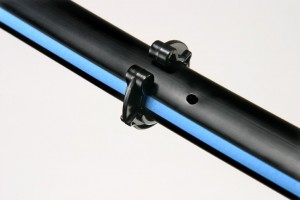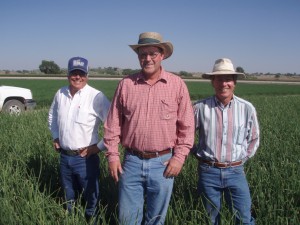A Shift to Drip Irrigation
In the wake of the drought, the Midwest is seeing a shift from pivot and furrow irrigation to drip irrigation on some acres. In a recent and great article by Corn&Soybean Digest, reporter Larry Stalcup wrote about making the switch to drip irrigation. Larry interviewed Don Anthony, a Lexington, Nebraska, grower to learn about his experiences with subsurface drip irrigation (SDI), as well as Freddie Lam, an agricultural engineer and irrigation researcher at Kansas State University.
According to Freddie Lam of Kansas State University, more than 300,000 acres are now drip irrigated in the Great Plains, much of which is cotton. But many growers in the western Corn Belt and southern High Plains are also making the shift to drip irrigation for other crops such as corn and soybeans.

 This week, Toro announced a new emitter flow rate for its popular BlueLine® PC dripline, the 0.26 GPH pressure-compensating (PC) emitter. This new 0.26 GPH pressure-compensating emitter is the latest addition to Toro’s other BlueLine PC flow rates (0.42, 0.53, and 1.00 GPH).
This week, Toro announced a new emitter flow rate for its popular BlueLine® PC dripline, the 0.26 GPH pressure-compensating (PC) emitter. This new 0.26 GPH pressure-compensating emitter is the latest addition to Toro’s other BlueLine PC flow rates (0.42, 0.53, and 1.00 GPH).  Larry Standage has reaped all the typical benefits of converting to drip irrigation with his onions in Vale, Oregon, including increased yields, reduced runoff, and less use of water, fertilizer, and labor. But the most important benefit is that Standage builds customer loyalty as a result of a higher quality, more uniform crop.
Larry Standage has reaped all the typical benefits of converting to drip irrigation with his onions in Vale, Oregon, including increased yields, reduced runoff, and less use of water, fertilizer, and labor. But the most important benefit is that Standage builds customer loyalty as a result of a higher quality, more uniform crop. Increasing water costs and water scarcity are becoming critical issues that are affecting the bottom lines for growers’ businesses. Whether these issues are the result of droughts, environmental concerns, or water regulations, the fact is that growers need to improve their water management techniques.
Increasing water costs and water scarcity are becoming critical issues that are affecting the bottom lines for growers’ businesses. Whether these issues are the result of droughts, environmental concerns, or water regulations, the fact is that growers need to improve their water management techniques. Chuck Herrin manages Worth Farms in California’s Westlands Water District. Founded by his grandfather, a custom harvester turned farmer, Worth Farms today grows 4,500 acres of drip irrigated crops including 3,500 acres of processing tomatoes.
Chuck Herrin manages Worth Farms in California’s Westlands Water District. Founded by his grandfather, a custom harvester turned farmer, Worth Farms today grows 4,500 acres of drip irrigated crops including 3,500 acres of processing tomatoes.